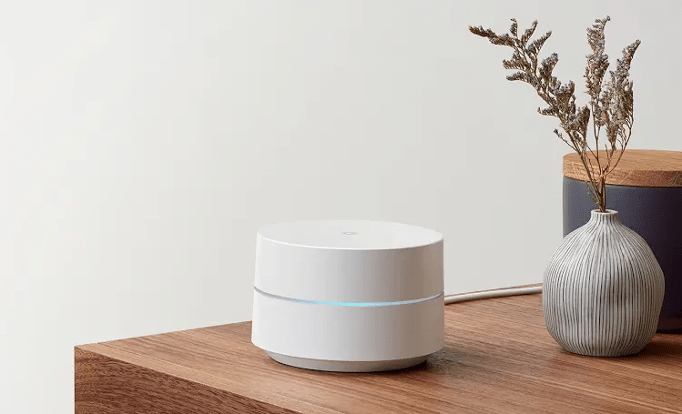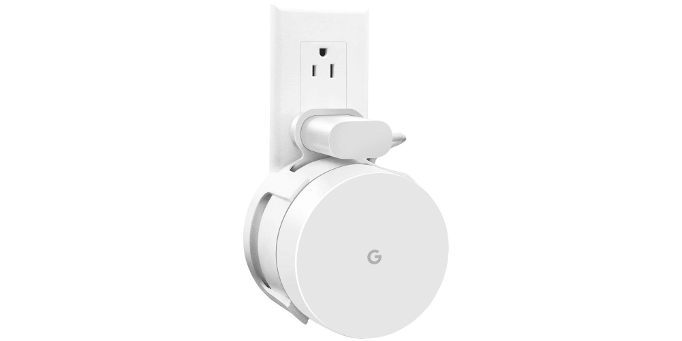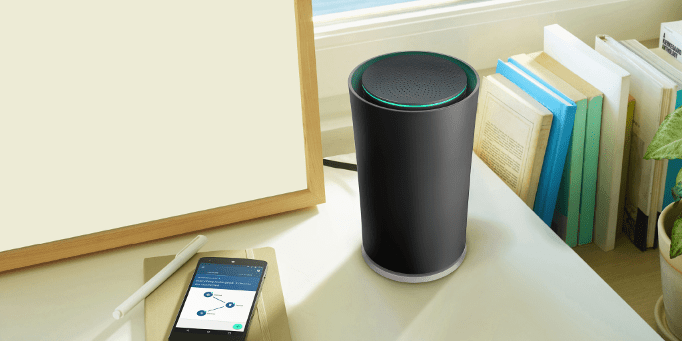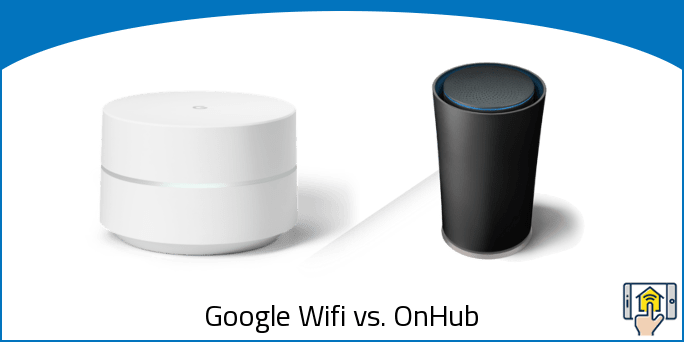When it comes to keeping your various devices running efficiently, a fast and stable internet connection has never been more important. If you have a high-tech home, chances are that you have a fast internet package from your ISP, but can your old, outdated router keep up with the demands of a modern smart home?
Many people don’t realize the enormous impact that having an up-to-date, intelligent WiFi system can have on their network’s speed and stability. Over the past few years, we’ve seen a surge of smart devices that all offer their own take on high-tech wireless connections. But which ones are worth your time?
In this article, we compare the Google WiFi vs. Onhub TP-Link in order to help give you a sense of what each router brings to the table. Read on below to figure out if Google got it right the first time, or if their sophomore effort is the router to beat.
Google WiFi vs. Onhub TP-Link — About
Google release their first router, the OnHub, a few years back, and at the time it seemed way ahead of the game. In the present, however, it’s specs and features are a little bit less impressive — especially compared to some more modern systems like the eero or Netgear Orbi. With that said, it still manages to provide decent performance, especially on congested home networks. Add to that the very attractive price, and it’s clear to see that the OnHub family of routers is still a viable choice even with the advent of the newer Google WiFi router.
The OnHub family consists of two different models: one from TP-Link and the other from Asus. Both work with the Google WiFi companion app and offer their own specific benefits and drawbacks. For a more in-depth between the two models, check out our comparison of the Google Onhub TP-Link vs. Asus. This article focuses on the TP-Link model with little regard for Asus.
The OnHub TP-Link was created in a collaboration between Google and TP-Link, and was the first entry in the OnHub family and Google’s first attempt at creating a smart router.
When it first released, the OnHub was much more expensive than its competitors. Google justified this price disparity with the addition of features like Bluetooth 4.0 and support for ZigBee technology, but both perks have been discontinued in the present day. The drop of these features was probably what led to the huge price drop; and the OnHub is now an attractive option for those looking for a capable network at a more affordable price point.
The Google WiFi system is a newer offering from the company and it works a bit differently than a traditional router. When installing the network, you’ll put up multiple points throughout your home that combine to form a “mesh” that delivers strong WiFi across an impressive distance.
Google WiFi has built a name for itself in the smart router scene, and had become a shining example of the new generation of networking systems, these new setups ditch the idea of routers and WiFi extenders and instead utilize multiple points in order to beam a wireless signal across the entire home.
Google was definitely not the first brand to bring a mesh network solution to market, but to this day their equipment remains some of the simplest and cheapest options out there. eero is a huge name in the smart WiFi scene, and Google managed to promote the idea of mesh networks even when eero was struggling to gain traction.
One thing to keep in mind throughout this comparison is that the OnHub and Google WiFi systems actually work together, so you don’t necessarily have to choose one or the other. If you already have an OnHub network and want to expand its coverage, you can simply add in a Google WiFi point and keep your existing setup with an increased range. The OnHub can also work as a WiFi point in your Google WiFi system, which allows the compatibility to go in both directions.
Google WiFi vs. Onhub TP-Link — Things in Common

-
Reduces WiFi Dead Zones – One of the primary functions of any smart WiFi system — the OnHub and Google WiFi included — is to reduce WiFi dead zones.
Older routers typically struggle to beam consistent signals to the entirety of the home. Distance and obstacles like walls or furniture can diminish the quality of the connection and lead to creating areas in your home where you’ll struggle to keep yourself online reliably.
Both the OnHub and Google WiFi are designed in a way that addresses these dead zones and keeps your connection the same wherever you happen to be. Gone are the days where you have to run around your home looking for a reliable signal. An updated router can sometimes make all the difference when it comes to consistent, stable, and fast connections.
With that said, it may be possible to address any issues in your signal without shelling out for entirely new network equipment. Sometimes just taking a few minutes to move your existing router to a more favorable location can get rid of these inconsistencies and keep your connection a lot more reliable and predictable. Consider downloading an app like Wi-Fi Sweetspots for iOS or Wi-Fi Analyzer for Android, locating where your signal starts to drop off, and adjusting the location of your router accordingly.
-
Dual-band WiFi Radios – Both the OnHub and Google WiFi systems have dual-band WiFi radio. This essentially means that your devices will have two different “bands” that they can choose from in order to send and receive data — a 2.4GHz and a 5GHz IEEE 802.11a/b/g/n/ac frequency.
Having access to both of these bands gives the network a little bit more leeway when it comes to supporting a huge number of simultaneous connections. As more and more devices compete for bandwidth, having those two bands is going to make a major difference.
For homes with tons of different devices that all need to be online at once, however, you might be interested in a Tri-band device like the Netgear Orbi. Get an in-depth look at the pros and cons of the system in our comparison of the Netgear Orbi vs. Google WiFi.
-
Two Gigabit Ethernet Ports – While most people in the market for a router are primarily interested in a strong WiFi connection, it’s important to also have internet equipment that supports a hardwired connection as well.
The Google WiFi features two gigabit Ethernet ports per WiFi point, which should give you ample room to hook up devices like gaming PCs or smart home hubs. Just keep in mind that one of the ports on the primary router will be taken up by the connection to your modem, effectively leaving you with one fewer port. Also included on each point is a USB-C port to power the device.
The OnHub features 1 WAN, 1 LAN, and one USB 3.0 port. This setup allows you to keep your home free from the clutter of wires, although it’s not the most elegant solution for those looking to hook up a lot of devices. To hardware more connections, you’ll need to purchase a switch which turns the network setup into more of a mess than it needs to be rather than a simple router that just plain works.
Both devices fall a little short when it comes to ports when compared to competition like the Netgear Orbi, so we recommend checking that out if you’re hoping to run a lot of Ethernet.
-
Smart Home Support – One of the major benefits of a fast and intelligent WiFi system is that it does a great job of supporting the modern technology that makes up a smart home.
Since both routers have LAN ports that you can use to plug in hardwired devices, you should be able to plug in controllers like the Wink hub 3 or SmartThings Gen 3 in order to bring a sturdy and speedy network to everything from smart pet products to home security systems.
-
No Subscription – There are a number of routers and mesh networks that lock some additional features behind a subscription. In some cases, it’s worth paying the extra fee in order to unlock useful security features or parental controls. However, it’s always nice to purchase a router that works well out of the box and won’t charge you for added utility.
Both the OnHub and Google WiFi have all of their features unlocked by default. Pay a one time purchase fee and enjoy smart WiFi for years to come without any additional costs.
-
Easy to Set Up – Last but not least, it’s important to mention that both Google WiFi and OnHub have a very simple installation process.
Like pretty much any other Google product, you’ll need a Google account in order to set up the OnHub. One thing that’s great about this particular router, however, is the company’s assurance that they won’t be monitoring your data. Google as a whole makes a lot of their money through collecting relevant data and providing highly-relevant targeted advertisements to users. It’s nice to know that that same sort of treatment won’t be included with the router — leaving your personal data untouched and private.
To set up OnHub, you’ll need to download, install, and use the Google On app — available for both iOS and Android. Plug in your router, boot up the app, and get your network up and running in around 5 minutes from the time you open the box!
The Google WiFi functions similarly, with a plug-and-play setup that only requires a modem, an outlet, and an easy-to-understand mobile app.
Google is a wonderful example of the idea that smart products don’t necessarily need to be complex. With either router, it should be incredibly simple to fill your home with reliable WiFi, even if you’re not technologically-inclined in the least.
Google WiFi vs. Onhub TP-Link — Differences

-
Difference #1: Antennas & Performance – There are some notable differences in the number of antennas included in each device as well as the performance that said antennas are capable of.
It’s important to note that when we talk about antennas, we’re referring to the equipment inside of the router itself rather than the nodes that work together with the base to create a mesh network.
The Google WiFi contains an array of five antennas, four of those being WiFi and one Bluetooth, arranged around the circumference of each device.
In independent testing by Purch Labs, it was found that a single Google WiFi device was capable of delivering a combined throughout of 465.4 megabits per second at a range of 5 feet. This throughout stopped to 450.2 Mbps at 15 feet, 389.7 Mbps at 50 feet, and 237.2 Mbps.
This may seem like a pretty significant drop-off, but when compared to the competition it’s actually not that bad. It’s definitely not exceptional and you’ll start to notice a decrease in speed the farther you get from the router, but it’s certainly not poor enough to knock it out of the running.
The OnHub is made up of 13 antennas in a circle around the interior of the router, with six dedicated to the 5GHz band, six for the 2.4 GHz band, and the last to boost the signal.
It may seem like the OnHub would have the advantage due to the greater number of antennas, but that’s unfortunately not the case. Since the OnHub no longer supports Bluetooth or ZigBee technology, there are two other antennas within the router that effectively do nothing. This wouldn’t be the end of the world, if not for the fact that the OnHub’s data transmission performance falls far behind the Google WiFi router.
While the OnHub features a peak theoretical throughput of 1.9 Gbps which is pretty impressive, its performance in testing was not nearly as impressive.
Even at close range, the OnHub could only more 265.3 Mbps at a distance of 5 feet, with. 3.4 millisecond latency. At long distance transmissions of up to 140 feet, it managed to avoid a huge drop off at 104.9 Mbps, but it’s safe to say that it’s much slower than the Google WiFi overall.
Essentially, it’s quite easy to tell from the performance that the OnHub was the original model and that the Google WiFi the more modern offering. The OnHub’s technology is a bit dated and falls behind its competitors in the current smart WiFi arena.
-
Difference #2: Hardware – While the Google WiFi definitely comes out ahead in terms of performance, that’s not to say that the OnHub doesn’t have its own share of benefits. In terms of the underlying hardware powering the router, there are several metrics in which the older router is more impressive.
The Google WiFi router features a Quad Core ARM CPU which each core up to 710 MHz. The Google OnHub, on the other hand, features a 1.4GHz Qualcomm professor that is based on the manufacturer’s Snapdragon 600 line of chips. This essentially puts it at the same power as a mid range tablet in terms of horsepower, which is pretty impressive for an older router.
With that said, it’s difficult to say which device has the edge as far as the processor goes. While each core on the Google WiFi router runs at 710 MHz vs. the 1.4GHz of the OnHub, it has four cores vs. the latter’s dual-core setup — effectively making their power pretty evenly matched.
Where the separation in power becomes much more apparent, however, is in the underlying RAM that powers the device. The Google WiFi features 512MB of RAM which is enough to keep it running smoothly, but the OnHub’s 1GB of memory offers nearly twice the power.
Both routers feature 4GB of flash memory, so the battle is pretty evenly matched there.
One aspect worthy of note about the OnHub is that when it starts up, it will only allow software to run — lessening the chances of a hacker hijacking the router.
All in all, it seems as if the Google OnHub is slightly more powerful in terms of the hardware within. You’ve really got to take a step back, however, and really ask yourself whether the router is taking advantage of that full power. With the ZigBee and Bluetooth technology disabled and less impressive speed performance overall, does more RAM even really matter?
At its core, the Google WiFi delivers more impressive speeds across the entirety of your home, and that’s what really counts.
-
Difference #3: Range – Because the Google WiFi system is set up with the intention that you integrate multiple units, the range gets much more impressive as you start to add in more satellites.
One unit is enough for a small home or apartment, and will provide a fast and reliable signal in a range of 500-1500 square feet.
For a medium-sized home, you’ll want two units for a range of 1500-3000 square feet, and for large properties three WiFi units can beam internet to a range of 3000-4500 square feet.
The OnHub, on the other hand, is a stand-alone unit that covers up to 2500 square feet of your home without opportunities for expansion. If you’re looking for a mesh network that can grow to meet your needs, it might be best to pass on the OnHub. With that said, it’s possible to integrate the router into a Google WiFi system so you could always purchase the older router and upgrade later without your equipment going to waste.
-
Difference #4: Nightlight – One pretty unique feature on the OnHub is a nightlight of sorts. This isn’t intended to be a traditional nightlight per se, but the lights on the device can be adjusted to be bright enough to simply illuminate a small area.
The OnHub is even built with a light sensor included that would theoretically allow the nightlight to turn on and off dynamically based off of ambient lighting, but it never ended up being enabled so you’re essentially left adjusting the lighting levels manually.
The nightlight isn’t a huge feature but it’s a nice little perk to have, and is technically an advantage that the OnHub has over its successor, the Google WiFi.
-
Difference #5: Speaker – One “advantage” that the OnHub has over the Google WiFi is a speaker, but we put that word in quotes for a reason.
In addition to the LED ring that can function as a nightlight, the OnHub has a speaker on the top of the device. This is pretty unique as far as smart WiFi systems go, but it’s not quite as useful as you’d think.
There are tons of unique features that he OnHub speaker could have included, such as an intercom, smart doorbell, audio player, and more, but none of those ever came to fruition.
Essentially, the speaker on the Google OnHub only functions for setup purposes. It basically makes an annoying chirping sound when a new client tries to connect, and that’s about it. Google support has confirmed that they don’t plan to add more speaker features in the future, so what you see is what you get.
We’d hardly consider the inclusion of the speaker an advantage, considering it only chirps every once in a while. In fact, it could even be viewed as a drawback due to the wasted potential and annoying noises.
It’s safe to say we’re not really missing the feature on the Google WiFi because it’s not much of a feature to begin with.
-
Difference #6: Design – If there’s one thing that makes it apparent that these are two completely separate generations of devices, it would be the design. That’s not to say one is necessarily better than the other, they’re just incredibly different.
Each Google WiFi unit is a compact, cylindrical case that is covered in a fingerprint-resistant, glossy white finish. Each device is also cut down the middle in order to leave space for an LED light that encircles the device nearly completely.
The router measures 4.1 x 2.7 inches and weighs 12 ounces. It’s small enough to fit in pretty much anywhere, but also weighty enough to not be knocked off the table when you bump it or tip over when all the ports are used. Essentially, it’s a well designed device that is inconspicuous and sturdy, and we don’t really have any complaints.
The OnHub is definitely a little more exciting looking than your average router. While most systems are boring and rectangular, the OnHub has an aesthetic that is truly unique. It looks like a cone that has been cut off at the bottom, and looks more like a modernist building than it does a piece of networking equipment. It is available with a black or dark-blue cover, has a brushed-aluminum base, and measures 4.1 x 4.6 x 7.5 inches.
It’s difficult to say which device is the better option design-wise, as they both look attractive yet starkly different. The Google WiFi definitely looks a little more normal, but there’s no denying that the OnHub is beautiful and unique.
Google WiFi vs. Onhub TP-Link — Comparison Chart
| Google Wifi | Google Onhub TP-LINK | |
|---|---|---|
| WiFi Connectivity | Dual-band WiFi radios, Simultaneous 2.4GHz and 5GHz IEEE 802.11a/b/g/n/ac |
Dual-band WiFi radios, Simultaneous 2.4GHz and 5GHz IEEE 802.11a/b/g/n/ac |
| Wired Connectivity | Two 1GB WAN/LAN, USB-C (power) |
Two 1GB WAN/LAN, 1x USB 3.0 |
| MU-MIMO | No | No |
| Beamforming | Yes | Yes |
| Bridge Mode | Yes | Yes |
| Security and network services | WPA2-PSK | WPA2-PSK |
| Reduces WiFi Dead Zones | Yes | Yes |
| Range | One 500-1500 sq ft Two 1500-3000 sq ft Three 3000-4500 sq ft |
One 2,500 sq ft |
| Processor | Quad-core 710 MHz | Dual-core 1.4GHz |
| Memory | 512MB | 1GB |
| Storage | 4GB | 4GB |
| Subscription | No | No |
| Dimensions | Diameter: 4.1” Height: 2.7” |
7.5” x 4.1” x 4.6” |
| Antennas | 5 | 13 |
| Speaker | No | Yes |
| Color | White | Blue or Black |
Google WiFi vs. Onhub TP-Link — Accessories

Both of the routers function quite well on their own, but there are some optional accessories you can buy that will enhance the experience in one way or another.
For the Google WiFi, consider purchasing a Google WiFi Wall Outlet Mount, a Wall / Ceiling Mount, or the Google Router Mounting Bracket for more flexibility and control during installation.
The accessories for the OnHub are a little more unique, and are known as Shells. Routers work best when they’re sitting out in the open, but sometimes you want to customize your device to make it blend in with the rest of the room a little more effectively. OnHub offers interchangeable shells with a variety of different aesthetics which offer quality design to fit most any home decor.
Google WiFi vs. Onhub TP-Link — Our Thoughts

Long story short, the Google WiFi system is the better system by pretty much every metric.
The only thing that the OnHub really has going for it is the increased range with one device, but that advantage becomes moot as you start to add in more Google WiFi units to expand the mesh network.
Add to that the fact that the Google WiFi is actually still cheaper than the discounted OnHub as of the writing of this article, and it’s easy to see that it’s the superior choice in nearly every sense of the world.
For a comparison that is a little more evenly matched, take a look at our Netgear Orbi vs. Google WiFi or eero vs. Google WiFi comparisons. There are a lot of smart routers on the market that all offers their own unique benefits and drawbacks, but in the case of this specific comparison, Google WiFi takes the cake.
Last update on 2024-04-26 at 08:56 / Affiliate links / Images from Amazon Product Advertising API



